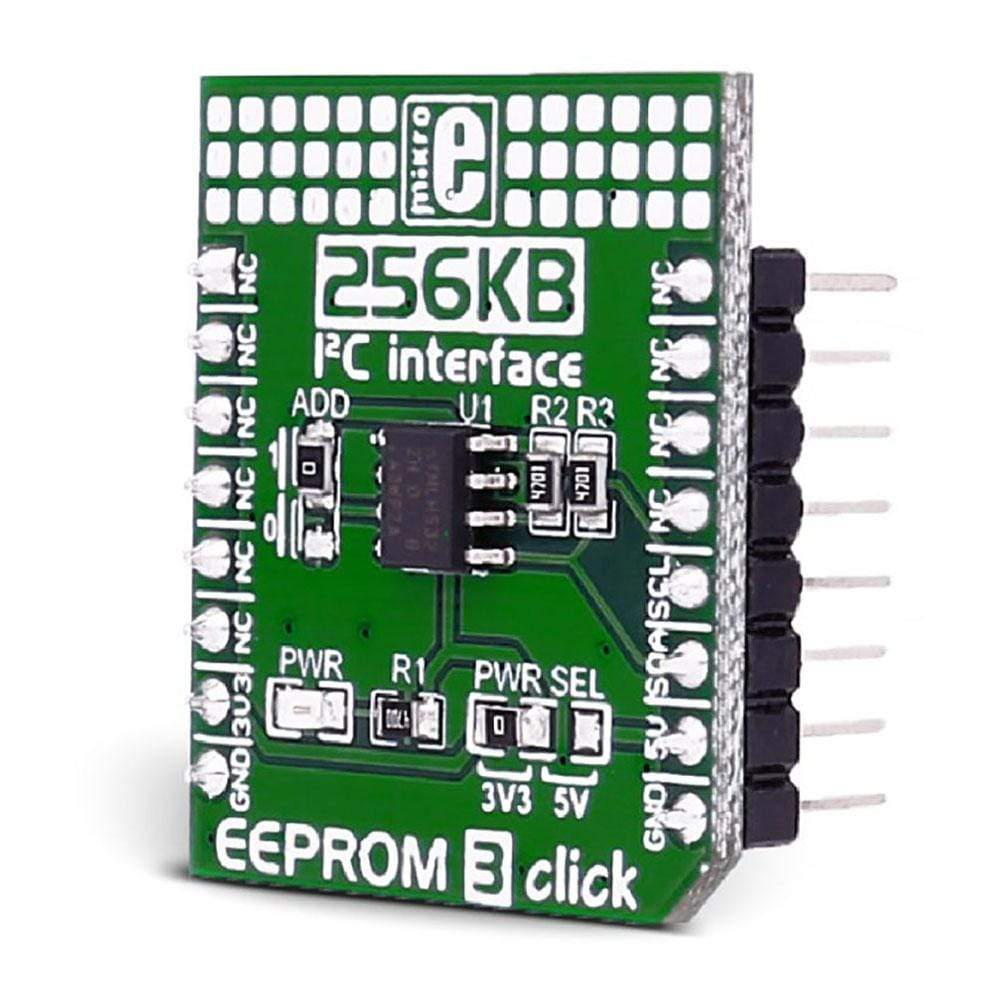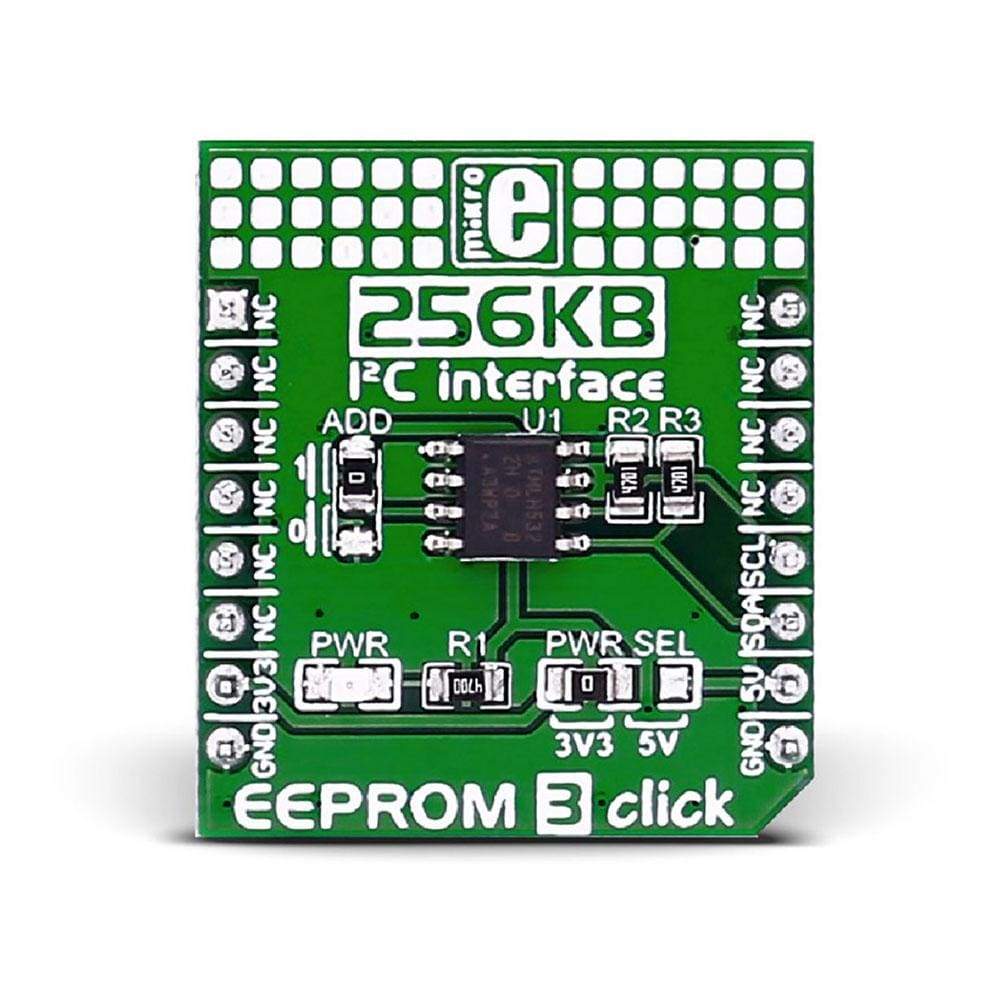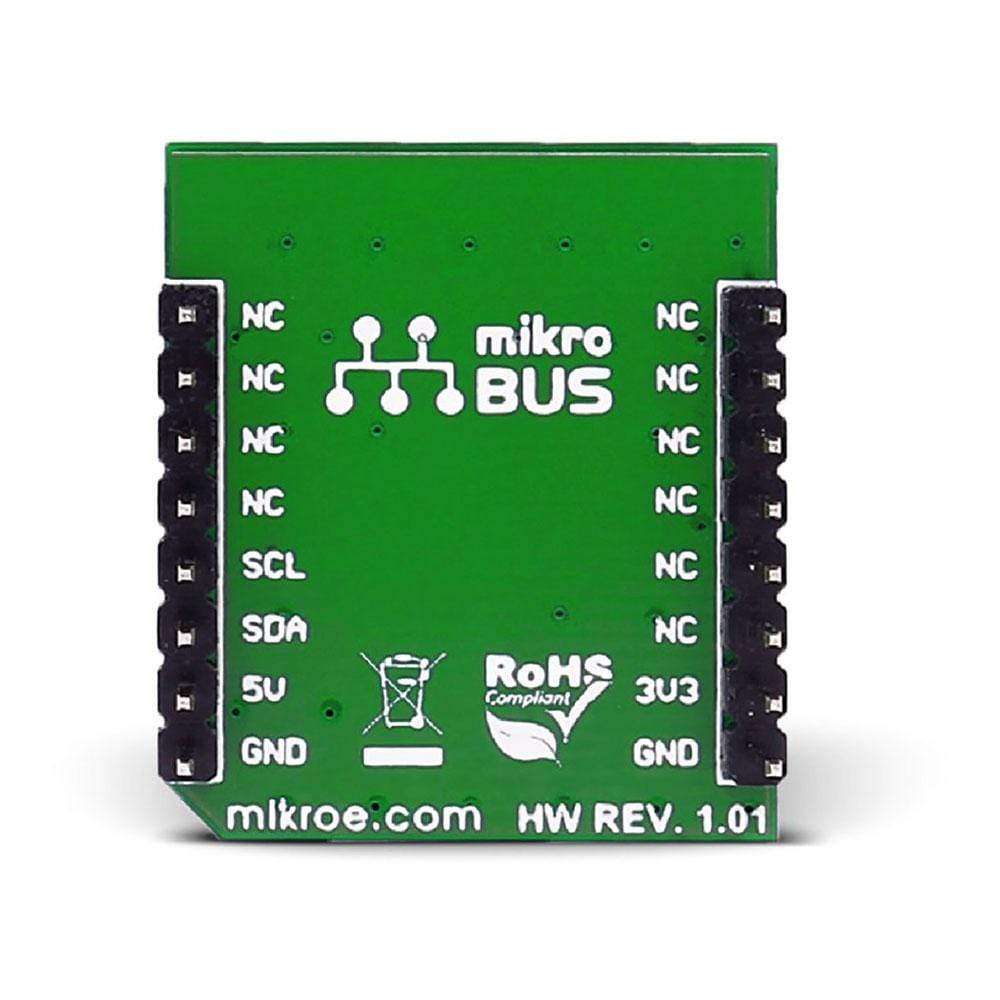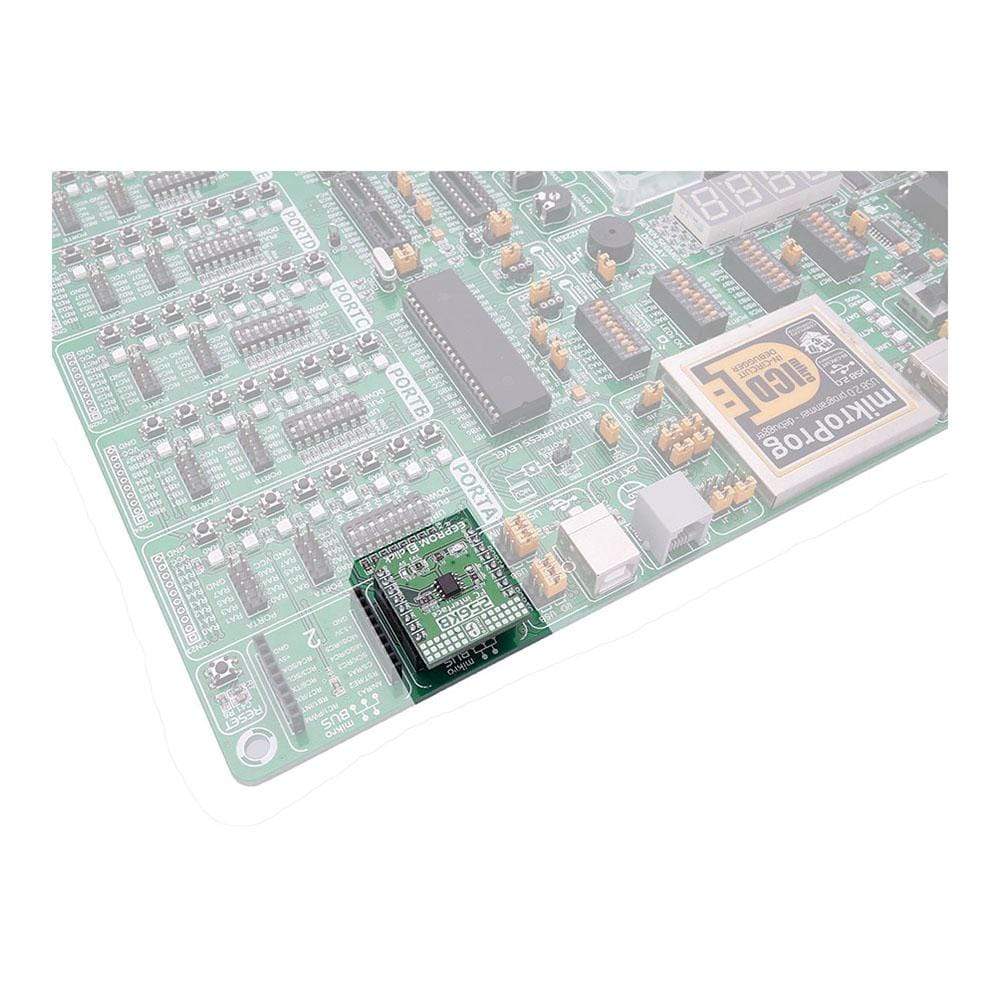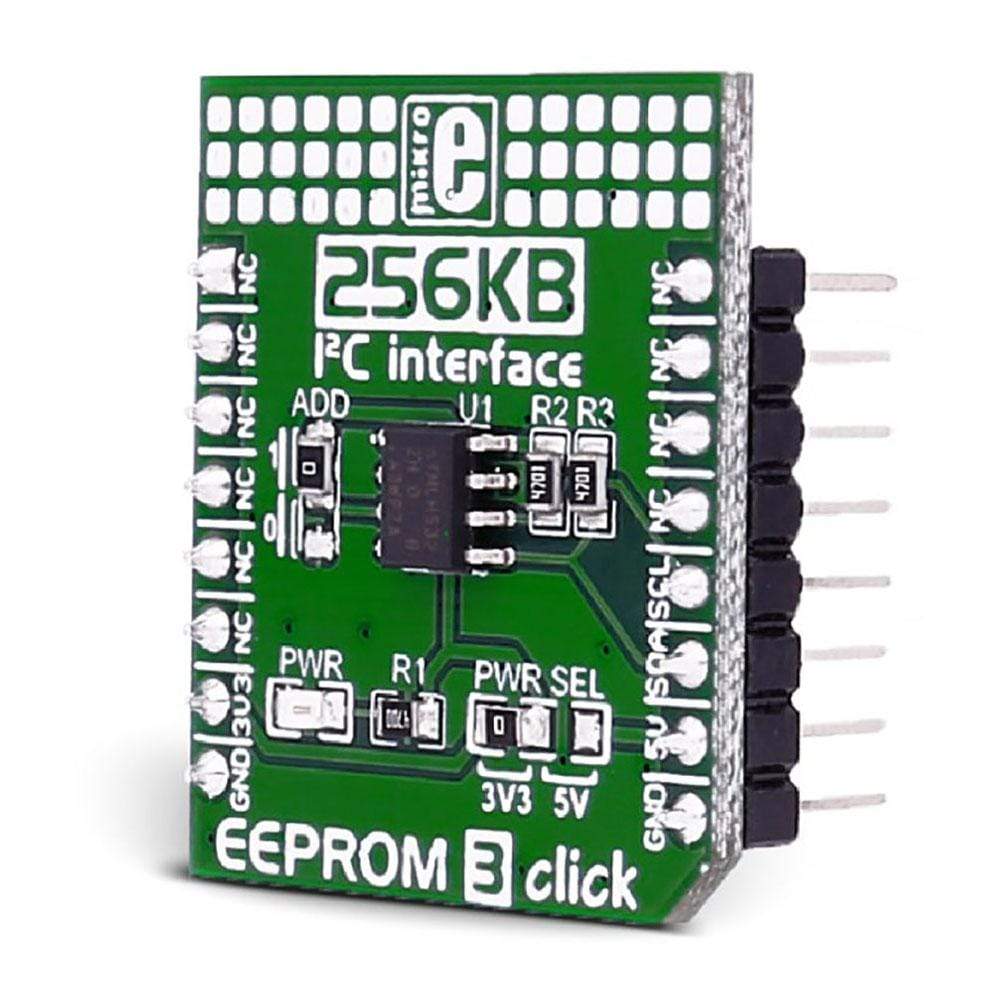
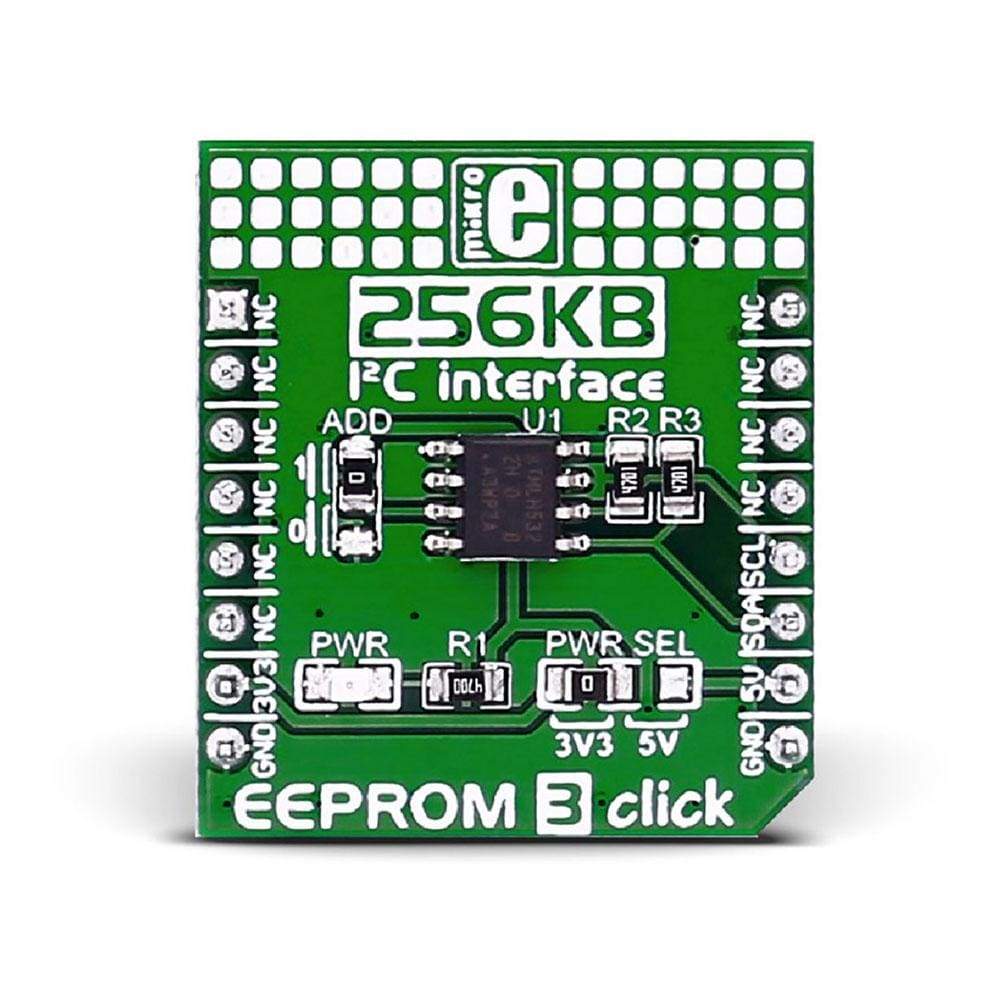
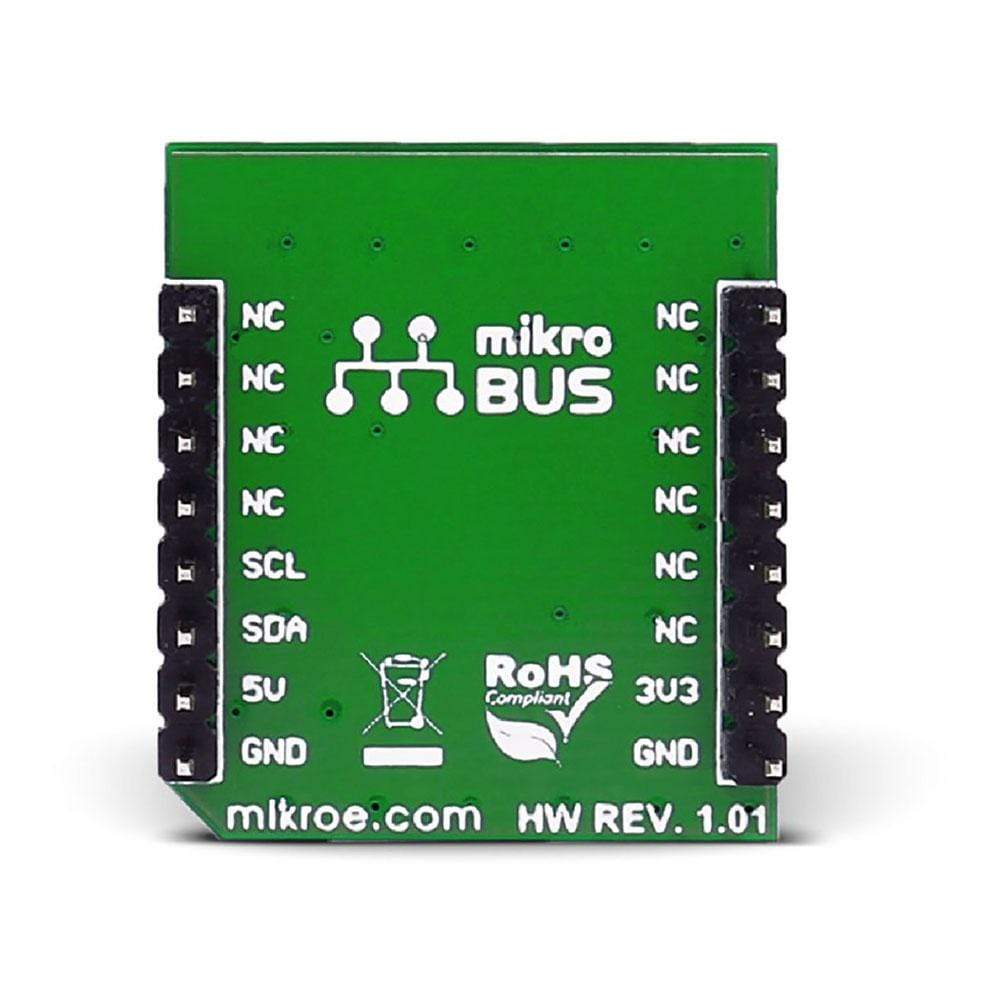
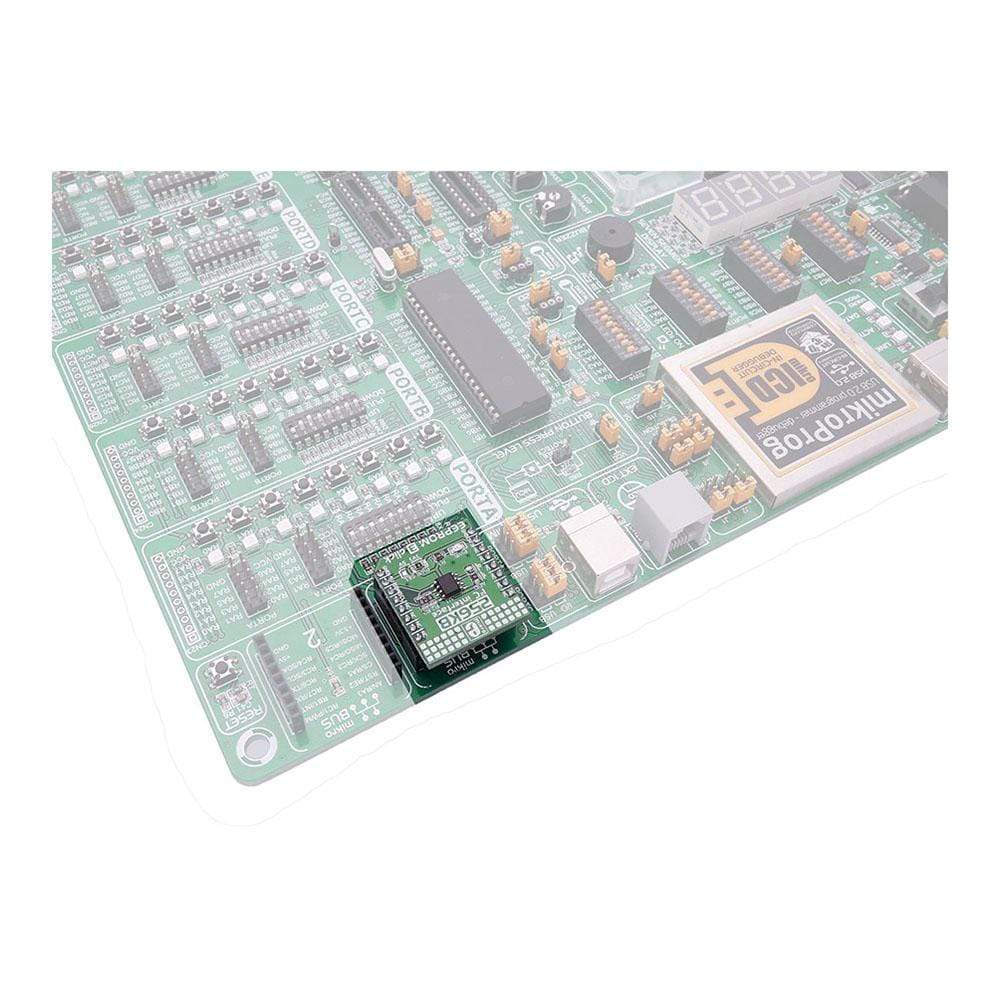
Overview
The EEPROM 3 Click Board™ provides 2 Mbit (2,097,152 bits) of Electrically Erasable Programmable Read-Only Memory, organized in bytes. In other words, this Click Board™ is an EEPROM memory medium with a capacity of 256 KB. The used EEPROM module has outstanding endurance, with 1,000,000 write cycles and a data retention period of over 100 years.
The EEPROM device on the EEPROM 3 Click Board™ features Schmitt trigger inputs for better noise protection, self-timed write cycles, it has a dedicated write protect pin for hardware protection of stored data, and an error detection and correction logic scheme that ensures reliable data output, staying transparent to the host controller.
Downloads
Das EEPROM 3 Click Board™ bietet 2 Mbit (2.097.152 Bit) elektrisch löschbaren, programmierbaren Nur-Lese-Speicher, organisiert in Bytes. Mit anderen Worten ist dieses Click Board™ ein EEPROM-Speichermedium mit einer Kapazität von 256 KB. Das verwendete EEPROM-Modul hat eine hervorragende Lebensdauer mit 1.000.000 Schreibzyklen und einer Datenaufbewahrungsdauer von über 100 Jahren.
Das EEPROM-Gerät auf dem EEPROM 3 Click Board™ verfügt über Schmitt-Trigger-Eingänge für besseren Rauschschutz, selbstgetaktete Schreibzyklen, einen dedizierten Schreibschutz-Pin zum Hardwareschutz der gespeicherten Daten und ein Fehlererkennungs- und -korrektur-Logikschema, das eine zuverlässige Datenausgabe gewährleistet und für den Host-Controller transparent bleibt.
| General Information | |
|---|---|
Part Number (SKU) |
MIKROE-1989
|
Manufacturer |
|
| Physical and Mechanical | |
Weight |
0.025 kg
|
| Other | |
Country of Origin |
|
HS Code Customs Tariff code
|
|
EAN |
8606015077369
|
Warranty |
|
Frequently Asked Questions
Have a Question?
Be the first to ask a question about this.

